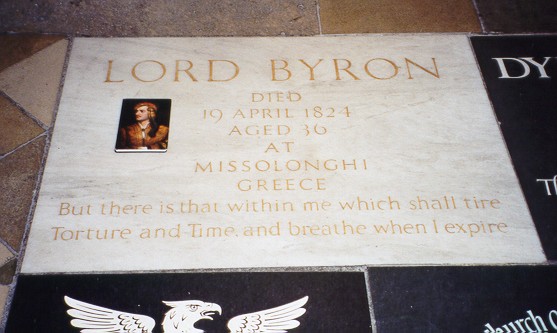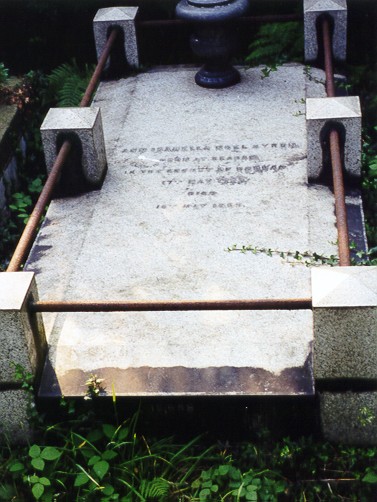| There
was some speculation that Byron would be buried in Athens instead of
in England, but on May 24 the body was brought to another ship, the
Florida. The Florida reached the downs of the Thames on 29 June, and
on 5 July the corpse arrived in London. A burial at Westminster Abbey
was refused, so it became clear that the journey hadn't come to an end
yet.
The corpse
was visited on 9 July by Mary Shelley. On 11 July Byron's old companion
Hobhouse also paid his respects
to his dead friend.
On 12
July the Londoners saw the funeral procession begin its four day journey
to Hucknall (Nottinghamshire). Mary Shelley saw the procession when
it passed her house and Byron's former lover Lady
Caroline Lamb broke down once more when she saw it too. Byron's
fame ascertained that not only his aquaintances, but also those who
had never known him personally were impressed. The poet John Clare
wrote:
While
I was in London, the melancholy death of Lord Byron was announced
in the public papers, and I saw his remains borne away out of the
city on its last journey to that place where fame never comes...
I happened to see it by chance as I was wandering up Oxford Street...
when the train of funeral suddenly appeared, on which a young girl
that stood beside me gave a deep sigh and uttered 'Poor Lord Byron.'
... I looked up at the young girl's face. It was dark and beautiful,
and I could almost feel in love with her for the sigh she had uttered
for the poet... The common people felt his merits and his power,
and the common people of a country are the best feelings of a prophecy
of futurity.
On 16
July Byron's coffin was finally placed in the family vault at Hucknall
Parish Church. In later years, however, doubts were expressed regarding
the presence of the body at Hucknall. Finally, in June 1938, the church
was closed to the public and the family vault of the Byrons was opened.
Byron's coffin was quickly located, as well as that of his daughter
Augusta Ada. Byron's coffin
was opened and it was observed that there was still hair on his head.
Parts of the body where skeletized and the embalming process had clearly
left it's marks. The tomb was photographed, but the body was not.
It was seen by only a few people who are all dead now. One more person
saw Byron's body the next day, just before the vault was sealed. It
was the writer Cecil Roberts and he wondered who 'desecrated and opened'
Byron's coffin. If Roberts was right and some deed of vandalism had
taken place before 1938, the 'who and when' remains obscure. There
seem to have been only two possible occasions, the death of Augusta
Ada in 1852 and the lengthening of the chancel in 1888.
|


